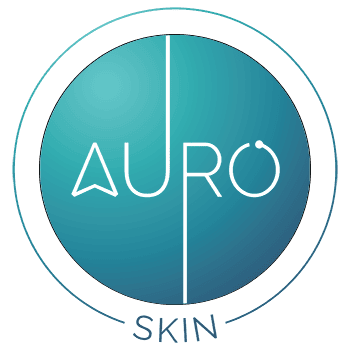- +91 91360 95925
- hello@auroskin.in
- 2nd Floor, Sapphire Plaza, Opp CNM School, Dadabhai Road, Vile Parle West, Mumbai
- About Us
- Services
- Skin
- Hair
- Nail
- Diagnostics
- Dermatosurgery
- Laser Treatments
- Aesthetics
- RF Skin Tightening Treatment
- Profilo Treatment
- Micropigmentation Treatment
- Dark Circle Removal Treatment
- Laser Vaginal Tightening Treatment
- Open Pores Treatment
- Botox Treatment
- Fillers Treatment
- Thread Lift Treatment
- Skin Patch | Allergy Testing Service
- Fillers Treatment
- Exosome Treatment
- Double Chin Reduction Treatment
- Patient Reviews
- Gallery
- Blogs
- Appointments
CONTACT US
- +91 91360 95925
- 2nd Floor, Sapphire Plaza, Opp CNM School, Dadabhai Road, Vile Parle West, Mumbai
- hello@auroskin.in
The treatment options available for Melasma Treatment at Auro Skin Clinic are:
- First line treatment in Melasma is always history taking followed by topical application creams.
- Detailed guidance regarding sunprotection according to the person’s profession is discussed.
- Sunscreen trial in the clinic for better acceptance and compliance and demonstration of application.
- Guidance on camouflage for melasma by different medical grade products is done. Brand- C tone series is used and orders for the same can be placed.
- Procedures for melasma include Chemical peels, Laser toning at very low fluence and Microneedling by Dermapen-4.
What is Melasma?
- Melasma is an acquired pigmentary condition of sun- exposed skin, often manifesting as dark patches.
- Another term is chloasma which is often used to describe Melasma developing during pregnancy
How does one get Melasma? What are the predisposing factors for Melasma?
- What causes Melasma is not yet clear. It is likely to occur when the color-making cells in the skin (melanocytes) of the affected areas produce too much color.
- Predisposing factors for melasma includes- hormonal changes- eg; pregnancy, menopause, hormonal pills, sunlight, family history.
Is Melasma hereditary?
- Treating hirsutism often involves the following approaches:
- Medications: Anti-androgen medications can help reduce hair growth and manage hormonal imbalances.
- Topical Hair Removal Methods: Methods such as shaving, waxing, or depilatory creams can temporarily remove excess hair.
- Electrolysis: A method that uses electric currents to permanently remove hair follicles.
- Laser Hair Removal: A procedure that uses laser technology to reduce hair growth in specific areas.
Lifestyle Management
- No, Melasma is not hereditary, however it is common in other family members.
How does Melasma appear?
- Melasma appears more commonly in women than men.
- It appears as brown, gray or black patches affecting the sun-exposed areas.
- Cheeks, forehead, upper lip, nose and chin, are involved usually in a symmetrical manner.
- Often, it may be limited to the cheeks and nose area. Other sun-exposed areas such as the neck, ear and the forearms are uncommonly affected.
- The skin lesions don’t cause any health issues, but pose a significant cosmetic problem.
What should one do if he/she gets Melasma?
- Consult a dermatologist who will conform the diagnosis and start appropriate treatment
- Self-medication with steroid containing creams should be strictly avoided.
- All dark patches on the face are not melasma.
Are there any tests to confirm Melasma?
- Melasma is usually diagnosed by the clinical appearance of skin lesions.
- A dermatologist can confirm the diagnosis by simple examination with a Wood’s lamp or dermatoscope.
- Occasionally skin biopsy may be needed to differentiate Melasma from other pigmentary conditions.
What is the treatment for Melasma?
- Melasma responds poorly to treatment. Generally sun protection measures along with a combination of various treatment modalities (topical, oral, and procedural) is helpful.
- Year-round life-long sun protection: Use broad-spectrum very high protection factor (SPF 50+) sunscreen applied to the whole face every day. It should be reapplied every 2 hours if outdoors during the summer months. Alternatively or as well, use make-up that contains sunscreen. Wear a broad-brimmed hat.
- Discontinue hormonal contraception. Always inform your gynecologist regarding the same.
- Camouflage with skin creams may help to reduce the cosmetic problem.
- Various skin lightening creams are used in Melasma. Hydroquinone (2–4%) based formulations applied accurately to pigmented areas at night for 2–4 months is useful.
- The most successful formulation has been a combination of hydroquinone, tretinoin, and moderate potency topical steroid. This has been found to result in improvement or clearance in up to 60–80% of those treated. Application has to be strictly as per guidance by the dermatologist.
- Oral medications for Melasma are under investigation, including tranexamic acid and glutathione.
- Chemical peels with glycolic acid, lactic acid, laser therapy with pigment lasers (Q-switched Nd YAG, Q- switched ruby and Alexandrite devices) intense pulsed light (IPL), carbon dioxide or erbium: YAG resurfacing lasers, mechanical dermabrasion and microdermabrasion are used in resistant cases.
Can Melasma be cured? Can Melasma recur?
- Melasma cannot be fully cured, however multiple treatment options available can improve the appearance.
- Melasma tends to recur and recurrence rates are higher if sun protective measures are not adequately followed.
Disclaimer
The above clinical content is published by The Indian Association of Dermatologists, Venereologists and Leprologists (IADVL) for circulation amongst patients for their education purposes.

